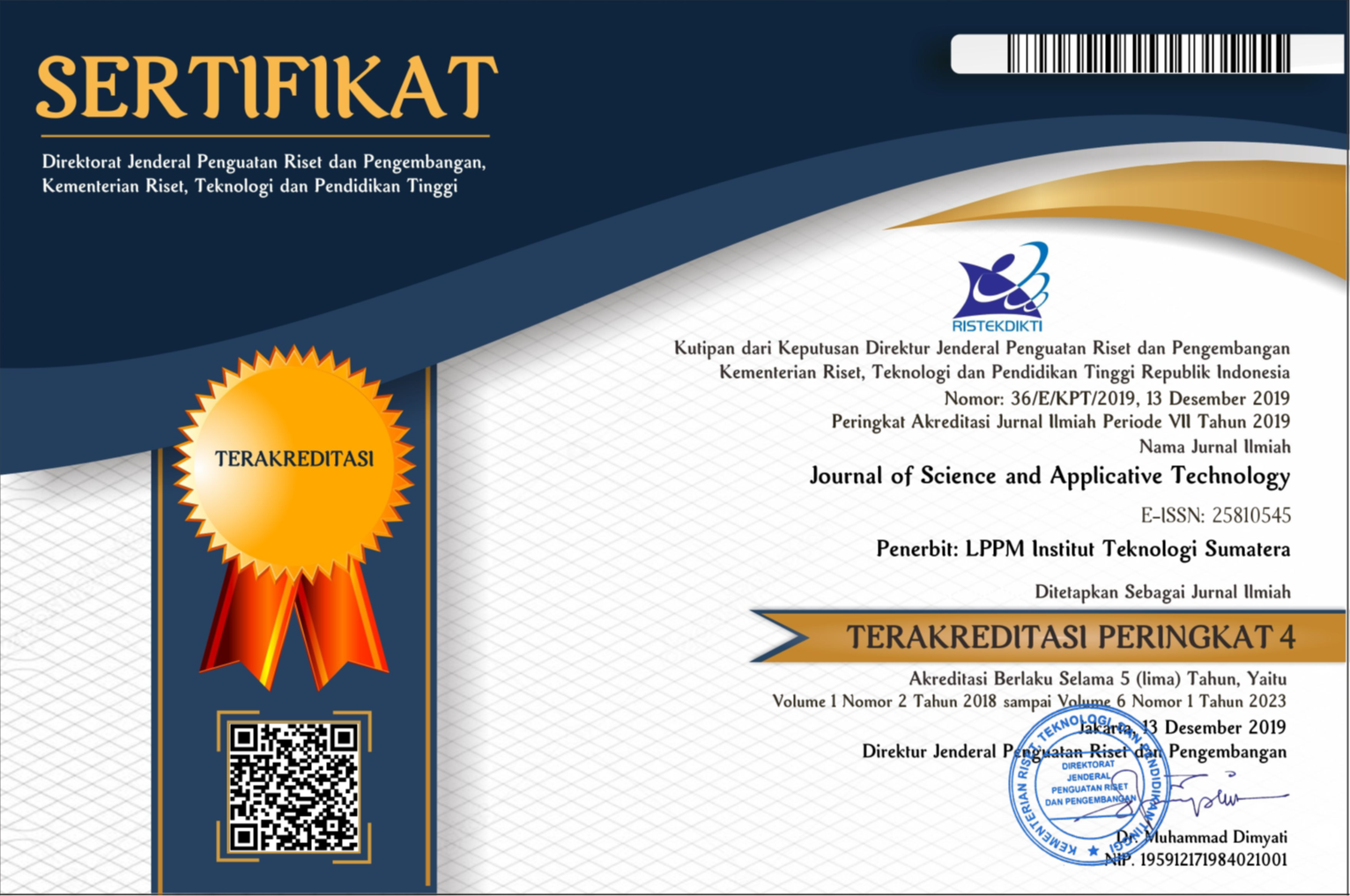Heat transfer through building envelope materials and their effect on indoor air temperatures in tropics
Abstract
High thermal mass modern building materials are unsuitable to be used in the tropics due to their thermos-physical properties and the ability in absorbing solar radiation, storing and transferring heat into the building, affecting the high indoor air temperature, hence, reducing thermal comfort. However, due to the high demand for building, utilization of this material is avoidable. This study investigated the heat transfer through building envelope materials and their effect on the indoor air temperature of the building through field measurement using a thermal camera and a handle wind meter. The results found that the ceiling is the part of the building which gained the highest indoor surface temperature which reaches 38.6 °C at the apex point at 2pm but decreased significantly to 30.4 °C at 6 pm. Meanwhile, the inner of the northeast wall gained 33.1 °C at the peak temperature and stayed above 30 °C until 10 pm. The indoor air temperature of this unit housing was 36.3 °C at 2 pm with the temperature difference between outdoor and indoor was 2.5 °C. At night, the indoor air temperature was 3.8 °C higher than the outside temperature.
Downloads
References
[2] Richard Hyde, Bioclimatic Housing - Innovative Designs for Warm Climates. UK: Earthscan, 2008.
[3] ASHRAE, ASHRAE STANDARD 55: Thermal Environmental Conditions for Human Occupancy. US: American Society of Heating, Refrigerating and Air Conditioning Engineers, 2010.
[4] A. Zain-Ahmed, A. M. Sayigh, and M. Y. Othman, “Field study on the thermal comfort of students in an institution of higher learning.,” in Proceedings of the First International Symposium on Alternative & Renewable Energy (ISAAF 97), 1997, pp. 550–557, doi: 10.1002/prca.201200064.
[5] P. K. Latha, Y. Darshana, and V. Venugopal, “Role of building material in thermal comfort in tropical climates - A review,” J. Build. Eng., vol. 3, pp. 104–113, 2015, doi: 10.1016/j.jobe.2015.06.003.
[6] K. M. Al-Obaidi, M. Ismail, and A. M. Abdul Rahman, “Passive cooling techniques through reflective and radiative roofs in tropical houses in Southeast Asia: A literature review,” Front. Archit. Res., vol. 3, no. 3, pp. 283–297, 2014, doi: 10.1016/j.foar.2014.06.002.
[7] B. Givoni, Climate Considerations in Building and Urban Design. New York, USA: Van Nostrand Reinhold, 1998.
[8] Q. J. Kwong and Y. Ali, “A review of energy efficiency potentials in tropical buildings - Perspective of enclosed common areas,” Renew. Sustain. Energy Rev., vol. 15, pp. 4548–4553, 2011.
[9] A. N. Sadeghifam, A. K. Marsono, I. Kiani, U. Isikdag, A. A. Bavafa, and S. Tabatabaee, “Energy analysis of wall materials using building information modeling (BIM) of public buildings in the tropical climate countries,” J. Teknol., vol. 78, no. 10, pp. 35–41, 2016, doi: 10.11113/jt.v78.7591.
[10] S. V. Szokolay, Introduction Architectural Science: The Basis of Sustainable Design. Burlington, MA: Linacre House, 2004.
[11] BMKG, “Suhu Rata-Rata Tahunan 2020,” 2021. https://www.bmkg.go.id/iklim/?p=ekstrem-perubahan-iklim.
[12] A. Preda and I. C. Scurtu, “Thermal image building inspection for heat loss diagnosis,” J. Phys. Conf. Ser., vol. 1297, no. 1, 2019, doi: 10.1088/1742-6596/1297/1/012004.
[13] K. M. Al-Obaidi, M. Ismail, and A. M. Abdul Rahman, “Design and performance of a novel innovative roofing system for tropical landed houses,” Energy Convers. Manag., vol. 85, pp. 484–504, 2014, doi: 10.1016/j.enconman.2014.05.101.
[14] A. Hilal, “Microstructure of Concrete,” in High Performance Concrete Technology and Applications, Salih Yilmaz and H. B. Ozmen, Eds. INTECH, 2016, pp. 3–24.
Copyright (c) 2021 Journal of Science and Applicative Technology

This work is licensed under a Creative Commons Attribution-NonCommercial 4.0 International License.
All the content on Journal of Science and Applicative Technology (JSAT) may be used under the terms of the Creative Commons Attribution-NonCommercial 4.0 International License.
You are free to:
- Share - copy and redistribute the material in any medium or format
- Adapt - remix, transform, and build upon the material
Under the following terms:
- Attribution - You must give appropriate credit, provide a link to the license, and indicate if changes were made. You may do so in any reasonable manner, but not in any way that suggests the licensor endorses you or your use.
- NonCommercial - You may not use the material for commercial purposes.
- No additional restrictions - You may not apply legal terms or technological measures that legally restrict others from doing anything the license permits.





















